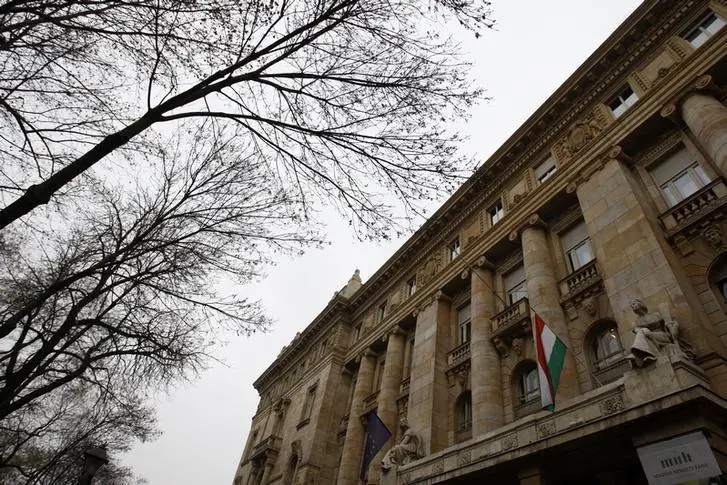PHOTO
The National Bank of Hungary slashed the top of its interest rate corridor by 450 basis points to 20.5% on Tuesday, while leaving other rates unchanged, in what it called a "multi-step process" towards policy normalisation.
With many economists saying inflation in central Europe has peaked, the Hungarian central bank's move sets the stage for the region's first rate cut since 2021, when policymakers began tightening sharply to quell surging inflation.
The interest rate corridor is used to guide interbank markets toward the policy rate, putting limits on rate-setting. The bottom rate, used for overnight deposits, stands at 12.5%.
Economists said given the low utilisation of the bank's overnight lending facility due to excess liquidity in the banking system, Tuesday's reduction would have little impact on monetary policy.
"It sends, however, a message to the NBH's counterparts (markets or others), that things are in motion, and that proper rate cuts should follow suit," JP Morgan analysts said in a note.
The bank left its benchmark base rate unchanged at 13%, the European Union's highest, as widely expected.
Tuesday's move, flagged by central bank Deputy Governor Barnabas Virag last week, could pave the way for cuts in the bank's 18% one-day deposit rate launched in October to stem the forint's plunge to record lows versus the euro.
JP Morgan expects a 100 bp cut in June to 17%, followed by a sequence of similar moves.
Prime Minister Viktor Orban's government has put pressure on the central bank to reduce borrowing costs to help economic recovery.
The forint firmed slightly to 375.65 per euro after the release, off one-year-highs hit a week ago but some 2% weaker since the central bank's surprise announcement on the start of monetary policy normalisation last week.
The NBH has said the latest inflation data - showing a headline rate above 25% - was in line with expectations. The European Commission projects Hungary's inflation running at 16.4% this year, the highest in the European Union.
(Reporting by Gergely Szakacs and Krisztina Than; Editing by Sharon Singleton)























